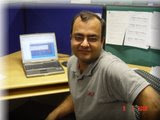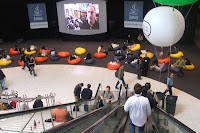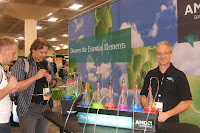
Today I attended a session by David Axmark - Co-founder of MySQL, one of the most popular enterprise level database which was recently bought over by SUN and has been open sourced.
The session was one of the general information session which covered, high level design, road map, community development etc about MySQL. David strongly advocated "open source" strategy for his database technology. I liked his thoughts about open-sourcing and here are some of the take aways ...
Faster Turn around for product defects : Bugs reported on the propritory software take ages to resolve (most of the times). Bugs once reported get into vendors tracking database and most of the times user does not have a mechanism to see the status and contact the designer working on it. On the contrary, bugs filed against open source software are open source as well. Community can see the bugs and anyone is free to pick up the bugs and drive them to resolution. In most of the cases, this is fast, transparent and robust
Faster time to market : Contributions to open source is not bound to any release cycle or does not result out of any market forecasts. Community developers often use the open source code base to add on value added features and support as and when it appears relevant to them. In the bargain, as the community gets active around the product, product gets feature rich exponentially. To cite an example, SQL Server supports almost all languages including the recent once like ruby etc.
Quality Aspects : Open Source products are built under strict community vigilance. 100 balls are watching every moment to any changes being done. This adds quality to the contributed source that finally makes it to the production.
On being asked about what does it take to build a successful open source community like MySQL, he said ....
A. The product must address the real problem for which people still struggle to have a good solution.
B. Resort to short but relevant and quick product updates. Typically , come up with releases that have one big increment and hundreds of small but relevant updates to start with.
C. Complement the offerings with good documentation and easily accessible binary downloads so that the product can be quickly accessed, configured and used. Its a good idea to maintain a 15 or 20 min time threshold to what user would need to get started with the product. Complex configurations and heavy installations are deterrents to early inceptions to some otherwise great products.


















